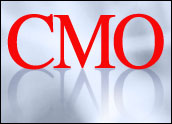
With the advent of technologies enabling buyers with increasing insight into the sellers’ products and competitors, the traditional strategies of bringing qualified prospects to a closed deal require a new set of contemporary skills among sales staff.
In September of 2009 research for “Sales Training: Translating Tribal Selling Knowledge into Bottom-Line Productivity,” Aberdeen found that high-performing sales organizations were aggressively deploying both tools, such as applications to collect and share “tribal knowledge” and a dynamic library of sales / marketing assets, as well as external services that promote reinforcement of learning, “train the trainer” methodologies, and licensable content that outlived initial sales training events.
A new Aberdeen benchmark report, scheduled for publication in October 2010, will address the contemporary modalities in which current sales training is being effectively delivered, as well as how the valuable lessons learned are being captured by sales managers for sustainable impact on the overall enterprise. You can participate in this research by taking a 15-minute survey here.
Background Information
Few business executives would disagree that traditional selling, particularly in the Business-to-Business (B2B) arena, has rapidly evolved from the times of Willy Loman or Glengarry Glen Ross into a sophisticated, data-rich environment requiring a myriad of contemporary prospecting, nurturing and closing skills. Prospects and customers demand more than a product from their sales rep; they seek added value through consultative and problem-solving skills, with need-based conversations instead of sales pitches, and often a long-term relationship that survives the drying ink on the contract.
Aberdeen research conducted for “Sales Intelligence: Preparing for Smarter Selling” (February 2010) found that Best-in-Class companies were 52 percent more likely than Laggards (35 percent vs. 23 percent) to deploy externally provided training on behalf of their sales team. These high-performing organizations utilize sales training and other enablers to out-perform Laggards across a number of key metrics:
- 52 percent vs. 26 percent of sales reps achieving annual of quota
- 5 percent annual improvement (decrease) in sales cycle, vs. a 7 percent worsening (increase)
- 6 percent year-over-year increase in revenue, vs. a 9 percent decrease
Moreover, companies from this study who deploy sales training report an average of 58 percent overall team attainment of quota, compared to 42 percent among those who do not; 30 percent of sales training users saw this metric improve on a year-over-year basis, compared to 18% for other companies.
Up the Training
Finally, while the conventional wisdom might have predicted a budgetarily required reduction in sales training during the 2009 recession, the opposite trend was revealed in “Sales Training: Translating Tribal Selling Knowledge into Bottom-Line Productivity.” Indeed, 45 percent of Best-in-Class companies were increasing their sales training spend, and even among Industry Average and Laggards, fully 74 percent of survey respondents were either maintaining or growing their related expenditures. Travel expenses, long considered a necessary burden associated with traditional, classroom-oriented sales training, were also mitigated by the growing use of virtual and other remote modalities; 31 percent of the Best-in-Class actually saw a year-over-year improvement (reduction) in their sales travel expenses, nearly twice the 16 percent reported by Laggards.
From the end user’s perspective, the key benefits of deploying Sales Training enablers are improved performance in:
Aberdeen’s hypothesis is that to achieve maximum sales effectiveness, companies must blend a combination of strategic actions, technologies and services to:
- Incorporate a process for collaborative collection and sharing of “tribal knowledge”
- Ensure CRM/SFA integration of call planning and selling milestones
- Provide post-training reinforcement of content presented in initial educational sessions
- Establish a dynamic library of marketing and sales assets
To participate in this research and receive a free complimentary copy of the resulting report upon publishing, take the 15-minute survey here.
















































